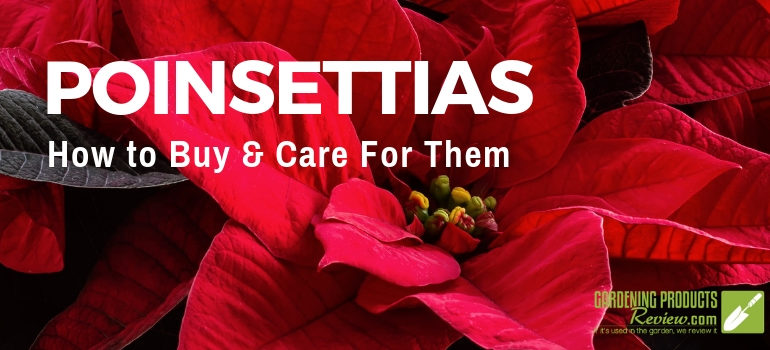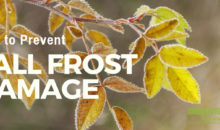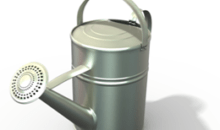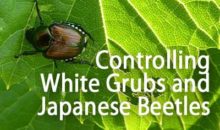Buying and Caring for Poinsettias
We independently evaluate all recommended products and services. If you click on links we provide, we may receive compensation.
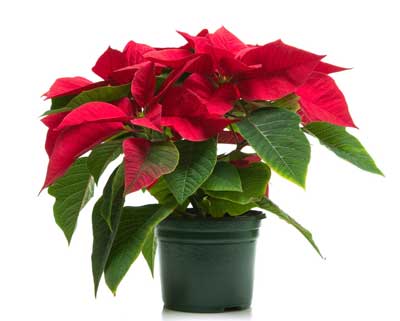 Poinsettias (Euphorbia pulcherrima) are one of the staples of the holiday season, appearing in stores late November in a wide range of colors, from the familiar red to pastel yellow and even vibrant bi-colors. They’re beautiful, easy to care for, and long-lasting – if you know how. To keep your poinsettias blooming brightly through the holidays, follow these simple tips.
Poinsettias (Euphorbia pulcherrima) are one of the staples of the holiday season, appearing in stores late November in a wide range of colors, from the familiar red to pastel yellow and even vibrant bi-colors. They’re beautiful, easy to care for, and long-lasting – if you know how. To keep your poinsettias blooming brightly through the holidays, follow these simple tips.
Buying Your Poinsettia
Bracts – Contrary to common belief, the colored, leaf-shaped parts of the poinsettia are not the flowers. These are the bracts, and they should have little or no green around the edges.
Did You Know?
December 12th is National Poinsettia Day.
Did You Know?
The Poinsettia is named after Mr. Joel Roberts Poinsett, a botanist and the USA’s first ambassador to Mexico, who first introduced the plant into the United States.
Poisonous Poinsettias?
Contrary to popular belief, poinsettias are not poisonous. Extensive testing by The Ohio State University, in cooperation with the Society of American Florists, clearly showed that poinsettias are not toxic, even at levels far in excess of what a person could possibly ingest. According to the POISINDEX Information Service, the primary information resource used by most poison control centers, a 50-pound child could safely eat over 500 poinsettia bracts without experiencing toxic effects. Of course, the child might have a bit of a stomach ache after eating that many houseplants!
Flowers – The true blooms are found at the base of the bracts. Buds should be tightly-clustered and have no yellow pollen (pollen indicates an older plant that may be past its prime).
Leaves – Avoid plants with yellow, greenish-white, missing, or drooping leaves, as well as plants with faded, torn, or discolored bracts. Foliage should be deep green and dense, and the plant should be stocky and well-branched. Look for a plant with a height that’s roughly 2 ½ times the width of the pot.
Insects / Disease – As with any plant, make sure your poinsettia is free from insects and diseases.
Store Conditions – Stay away from poinsettias on display in overcrowded conditions or those that are wrapped in protective sleeves. This is usually a sign that they haven’t been properly cared for and they’re likely to fade quickly.
Soil – Look for a plant with relatively moist but not waterlogged soil. Wet soil can cause poinsettia roots to rot.
Cover – Cover the plant before taking it home (e.g., with a protective paper or plastic sleeve), especially if temperatures are less than 50oF as exposure to cold can quickly kill a poinsettia.
Caring For Your Poinsettia
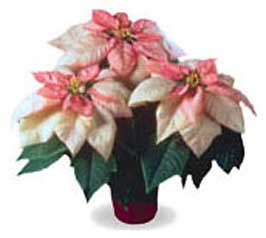 Light – Poinsettias need a minimum of 6 hours of bright (but not direct) sunlight each day. A sunny south, east, or west facing window is perfect. Turn the pot a quarter turn once a week to give each side of the plant enough light and encourage symmetrical growth.
Light – Poinsettias need a minimum of 6 hours of bright (but not direct) sunlight each day. A sunny south, east, or west facing window is perfect. Turn the pot a quarter turn once a week to give each side of the plant enough light and encourage symmetrical growth.
Temperature – Ideal temperatures for a poinsettia are between 65 and 70 F, although slightly lower temperatures at night (down to 60F) help the plant maintain its brilliant color. Higher and lower temperatures will shorten the plant’s life and cold (below 55F) may kill it. Generally speaking, if the temperature is comfortable for you, it’s comfortable for your poinsettia.
Place poinsettias away from all drafts (both hot and cold) and never allow the leaves to touch a cold window as this can injure the leaves and cause premature leaf drop.
Water – Poinsettias like moist, but not wet, soil. Check the soil daily and water the plant whenever the surface feels dry to the touch. Add water until it drains out the bottom of the pot (if the plant is wrapped in decorative foil, punch holes in the bottom or cut the bottom off). Immediately discard any excess water in the saucer. Both over- and under-watering will cause poinsettias to wilt, lose leaves and bracts, and eventually die.
Fertilizer – Do not fertilize poinsettias while they are in bloom. If you want to keep your poinsettia past the holiday season, you may fertilize it once a month with a balanced, all-purpose fertilizer after it has finished blooming.

